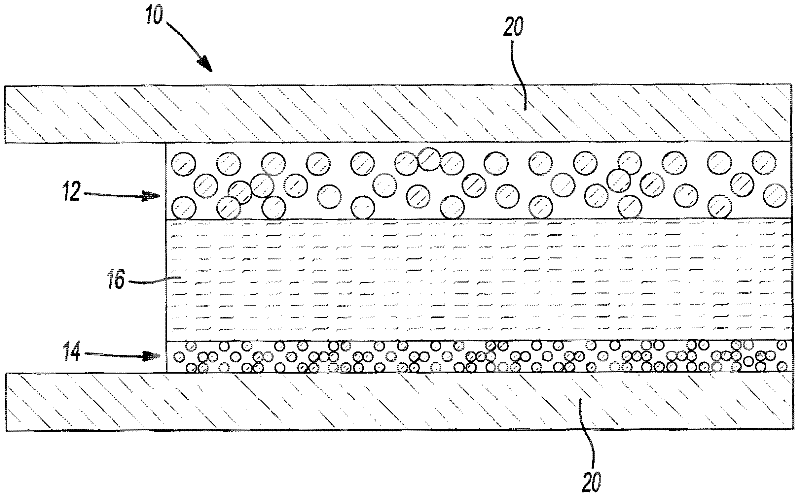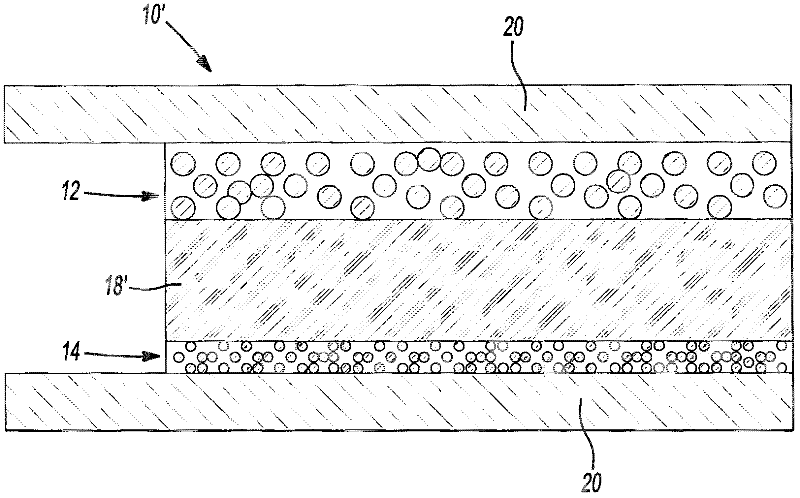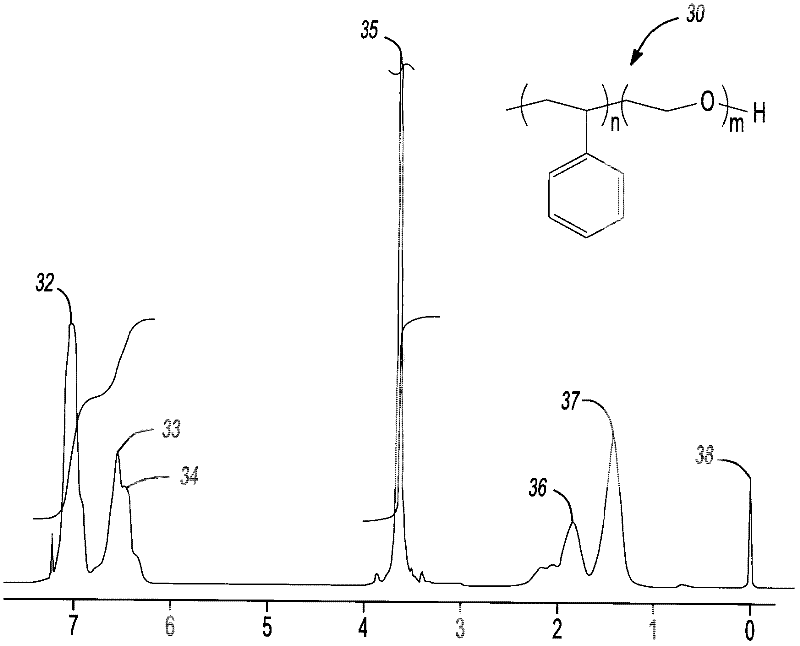Highly conductive polymer electrolytes and secondary batteries including the same
A polymer and electrolyte technology, applied in the direction of non-aqueous electrolyte batteries, secondary batteries, electrolytes, etc., can solve problems such as unstable, unsuccessful, and insufficient mechanical properties
- Summary
- Abstract
- Description
- Claims
- Application Information
AI Technical Summary
Problems solved by technology
Method used
Image
Examples
Embodiment 1
[0110] Example 1. Grafting of polyethylene oxide onto ethylene-acrylic acid copolymer using ester linkages.
[0111] About 15 mg of ethylene-acrylic acid (EAA) copolymer (available at PRIMACOR TM 3340 (commercially available from THE DOW CHEMICAL CO. under the trade name and grade designation) was dissolved in about 200 ml of hot xylene at a temperature of about 100°C. About 20.3 g of poly(ethylene glycol) methyl ether (PEG-ME) having a single hydroxyl group and a number average molecular weight of about 750 (available from Aldrich Chemical) was added to the EAA / xylene solution. The molar ratio of -OH groups on PEG-ME to -COOH groups on EAA is about 2:1. About 1.0g of p-toluenesulfonic acid (about 5.3mmol) and about 0.25g of B225 stabilizer was added to the solution. The solution was heated to reflux for about 20 hours. Water is removed from the reaction by azeotropic distillation and collected (eg, in a Dean-Stark trap). Infrared analysis of the reaction mixture is exp...
Embodiment 2
[0113] Example 2 was prepared analogously to example 1. Use about 26.1g of PRIMACOR TM 3340 and 16.5 g of poly(ethylene glycol) methyl ether having a number average molecular weight of about 350 (available from Aldrich Chemical). The ratio of OH to COOH groups on PEG-ME is about 2.0. Make two kinds of polymers with 1.1g p-toluenesulfonic acid and 0.25g Irganox TM The B225 stabilizer was reacted in about 300 mL of xylene at a reaction temperature of about 100° C. for about 22 hours. The product has at least about 80% of the acid groups on the backbone converted to ester groups, as determined by use of infrared spectroscopy. NMR analysis of the dried product indicated a poly(ethylene oxide) concentration of about 20% by weight.
Embodiment 3
[0115] Example 3 was prepared analogously to example 1. Use about 26.1g of PRIMACOR TM 3340 and 35 g of poly(ethylene glycol-propylene glycol) methyl ether (ie, a copolymer of ethylene oxide and propylene oxide with mono-OH groups) having a number average molecular weight of about 970 (available from Aldrich Chemical) . The ratio of OH to COOH groups on PEG-ME is about 2.0. Make two kinds of polymers with 1.4g p-toluenesulfonic acid and 0.25g Irganox TM The B225 stabilizer was reacted in about 300 mL of xylene at a reaction temperature of about 100° C. for about 20 hours. The product has at least about 80% of the acid groups on the backbone converted to ester groups, as determined by use of infrared spectroscopy. NMR analysis of the dried product was expected to indicate a poly(ethylene oxide) concentration of about 30% by weight of the graft copolymer.
PUM
| Property | Measurement | Unit |
|---|---|---|
| glass transition temperature | aaaaa | aaaaa |
| electrical conductivity | aaaaa | aaaaa |
| melting point | aaaaa | aaaaa |
Abstract
Description
Claims
Application Information
 Login to View More
Login to View More - R&D
- Intellectual Property
- Life Sciences
- Materials
- Tech Scout
- Unparalleled Data Quality
- Higher Quality Content
- 60% Fewer Hallucinations
Browse by: Latest US Patents, China's latest patents, Technical Efficacy Thesaurus, Application Domain, Technology Topic, Popular Technical Reports.
© 2025 PatSnap. All rights reserved.Legal|Privacy policy|Modern Slavery Act Transparency Statement|Sitemap|About US| Contact US: help@patsnap.com



